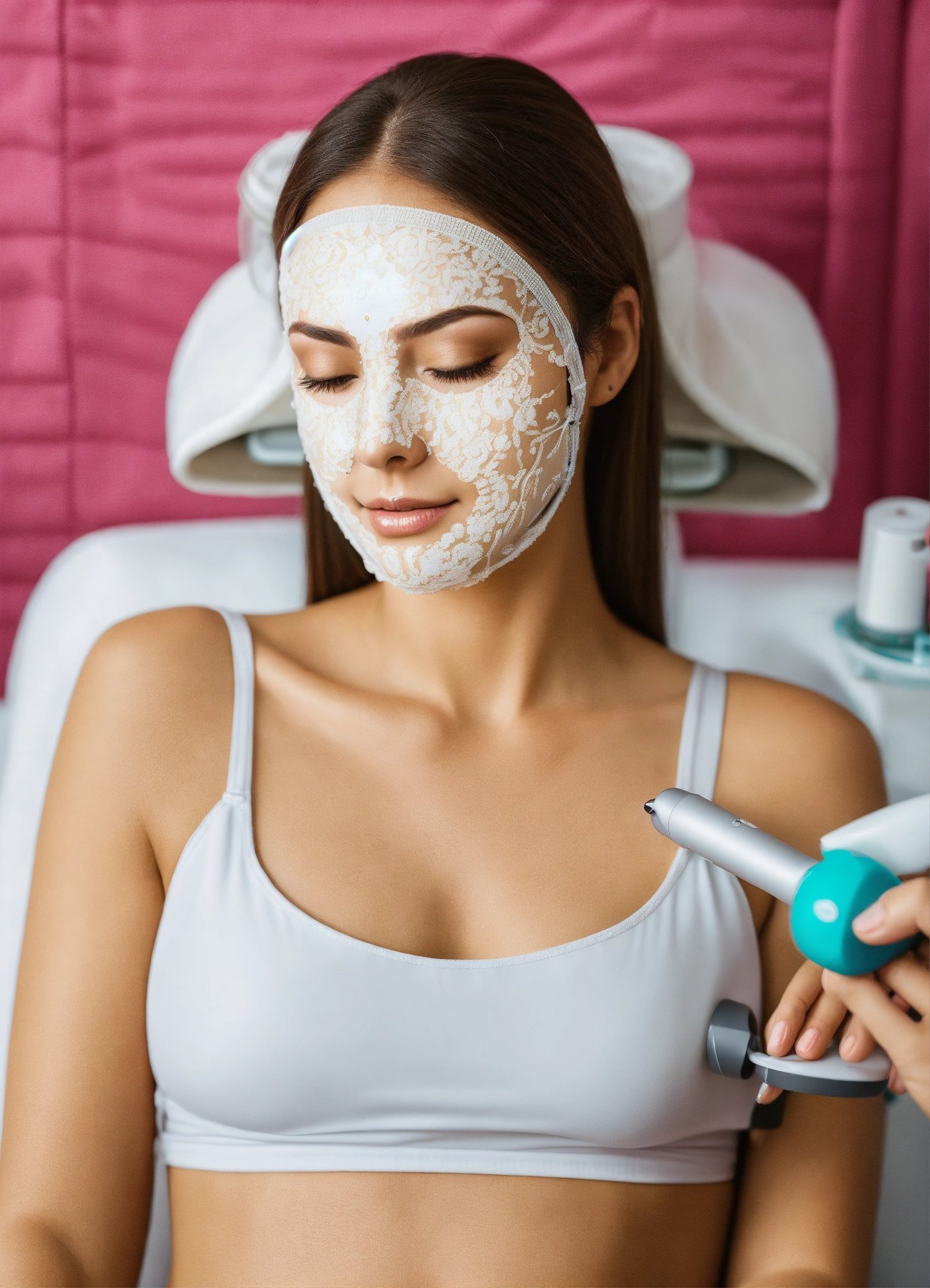Dermaplaning at home has become a popular addition to many skin care routines, offering a simple way to achieve smooth, glowing skin without leaving the comfort of your own bathroom. This facial hair removal technique uses a special facial razor to exfoliate the skin and remove peach fuzz, resulting in a smoother canvas for makeup application and promoting skin renewal. As more people seek cost-effective alternatives to professional treatments, learning how to dermaplane at home has gained significant interest.
This comprehensive guide will walk you through the process of dermaplaning at home, covering everything from preparation to post-treatment care. Readers will discover the benefits of this technique, learn about the best dermaplaning tools, and gain insights on how to dermaplane their face safely and effectively. Whether you’re new to DIY dermaplaning or looking to refine your technique, this step-by-step guide will help you achieve professional-looking results in the comfort of your own home.
Also Read: How Did Lululemon Get Its Name
What is Dermaplaning and Its Benefits
Dermaplaning is a minimally invasive cosmetic procedure that involves gently scraping the surface of the skin with a medical-grade scalpel or razor. This exfoliation technique removes the uppermost layers of dead skin cells and fine vellus hair, commonly known as peach fuzz. The process results in smoother, brighter skin and has gained popularity as an at-home skin care routine addition.
how to dermaplane at home: Understanding the Process
During dermaplaning, a healthcare provider or trained professional uses a specialized instrument to carefully shave away the top layer of skin. This procedure differs from other skin resurfacing methods like dermabrasion and microdermabrasion, as it specifically uses a scalpel or razor to remove skin cells and hair. The treatment is generally quick, relatively painless, and requires little to no recovery time.
how to dermaplane at home: Advantages for Skin
Dermaplaning offers several benefits for the skin:
- Improved skin texture and tone
- Reduction in the appearance of acne scars and fine lines
- Enhanced effectiveness of skincare products
- Smoother makeup application
- Brighter complexion
- Minimized appearance of pores
The removal of dead skin cells and peach fuzz reveals fresher, undamaged skin underneath. This process promotes skin cell turnover, resulting in a more youthful appearance. Additionally, dermaplaning can help to even out skin tone and reduce hyperpigmentation.
how to dermaplane at home: Who Should Avoid Dermaplaning
While dermaplaning is generally safe for most skin types, certain individuals should exercise caution or avoid the procedure altogether. These include people with:
- Active acne breakouts
- Cold sore outbreaks
- Eczema or psoriasis
- Skin burns, such as those from radiation therapy
- Recent use of Accutane or isotretinoin (within the last 6 months)
- Sensitive skin or recent sunburn
It’s essential to consult with a healthcare provider before undergoing dermaplaning, especially for those with preexisting skin conditions or concerns.
Also Read: How Did Lululemon Get Its Name
Preparing for At-Home Dermaplaning
how to dermaplane at home: Gathering necessary tools and products
To start the dermaplaning process, one needs to acquire the right tools. A professional-grade instrument, such as a specialized dermaplaning tool with a stainless steel blade, is essential. Stainless steel is hygienic, durable, and resistant to rust. It’s crucial to choose a tool with a good grip to prevent slipping and potential cuts. Some options include razors, electric trimmers, or specific dermaplaning devices.
how to dermaplane at home: Cleansing and drying the skin
Before dermaplaning, it’s vital to have a clean, dry face. One should use a facial cleanser designed to remove dirt and oils effectively. A double cleanse may be necessary to ensure all makeup and impurities are removed. After cleansing, the skin should be thoroughly dried. Experts emphasize that no skincare products should be on the skin when dermaplaning, as the drier the skin, the better the results.
how to dermaplane at home: Identifying areas to treat
Dermaplaning can be done on small areas of the face or the entire face. It’s particularly beneficial for those with dull or dry skin, fine lines, peach fuzz, actinic keratosis, or acne scars. The treatment is safe for most skin types, including those with rosacea or sensitive skin. However, individuals with active acne breakouts, cold sores, or recent sunburns should avoid dermaplaning these areas. It’s important to identify and focus on areas that will benefit most from the treatment while being mindful of any sensitive or problematic spots.
Also Read: How Did Lululemon Get Its Name
Step-by-Step Dermaplaning Technique
Proper tool handling
To begin dermaplaning at home, one should select a specialized dermaplaning tool with a stainless steel blade. These tools typically feature an ergonomic handle, similar in length to a pen, with a tapered razor edge. It’s crucial to use a clean blade for each session to maintain hygiene and effectiveness. When holding the tool, one should ensure a firm grip on the handle for stability and control during the procedure.
Correct angle and pressure
For optimal results, the dermaplaning tool should be held at a 45-degree angle against the skin. This angle allows for effective exfoliation without risking cuts or irritation. It’s important to note that light, feathery strokes are sufficient; there’s no need to apply significant pressure. The sharpness of the blade does the work, so gentle handling is key to achieving smooth results without damaging the skin.
Directional strokes
When dermaplaning, one should work in small sections, about the width of the razor. Starting at the top of the ear, make short, downward strokes, moving towards the jawline and inward to the nose. This technique covers the cheek, jawline, chin, and upper lip areas effectively. After completing one side, move to the other, followed by the forehead. It’s crucial to always move in the direction of hair growth, typically downward, using these short, feathery motions. One should avoid the hairline, eyelids, and sides of the nose, and exercise caution around the eyebrows to prevent unwanted hair removal.
Also Read: How Did Lululemon Get Its Name
Post-Dermaplaning Skincare and Maintenance
Soothing and hydrating the skin
After dermaplaning, the skin may feel dry and sensitive. To combat this, individuals should apply a hydrating serum or face oil to nourish and protect the skin. For optimal results, it’s advisable to stick to a simple skincare routine for two weeks following the treatment. This routine should include a gentle cleanser, hydrating serum or face oil, and sunscreen daily. It’s crucial to avoid using retinol or glycolic acid for at least a week after dermaplaning, as these ingredients can cause irritation and dryness.
Frequency of treatments
The effects of dermaplaning typically last between two to four weeks, depending on skin type and regeneration rate. For most individuals, dermaplaning every 3 to 4 weeks is recommended to align with the natural skin regeneration cycle. However, the ideal frequency can vary based on individual skin types and conditions. Those with oily skin may require less frequent sessions, while individuals with dry or normal skin might benefit from more regular treatments. It’s essential to pay close attention to how the skin reacts after each session and adjust accordingly.
Addressing potential side effects
Some individuals may experience redness or a scraped feeling in the two or three days following the procedure. To minimize potential side effects, it’s crucial to avoid direct sun exposure and use a broad-spectrum sunscreen with at least SPF 30 daily. Hot water, harsh cleansers, and abrasive tools should be avoided to prevent irritation. Staying hydrated by drinking plenty of water can help maintain skin moisture from the inside out. If any persistent side effects occur, such as patchy skin pigmentation or scarring, it’s important to consult a dermatologist for appropriate treatment.
Conclusion
Dermaplaning at home has emerged as a popular and effective way to achieve smoother, brighter skin without the need for professional treatments. This guide has provided a comprehensive overview of the process, from understanding its benefits to mastering the technique and maintaining results. By following these steps and taking necessary precautions, individuals can safely incorporate dermaplaning into their skincare routine to enhance their skin’s appearance and maximize the effectiveness of their skincare products.
As with any skincare procedure, it’s crucial to listen to your skin and adjust the frequency of treatments as needed. Remember to always use clean tools, maintain proper technique, and follow up with gentle, hydrating skincare to protect your newly exfoliated skin. With practice and patience, at-home dermaplaning can become a valuable addition to your beauty regimen, helping you achieve a radiant complexion and boosting your confidence in your skin’s natural beauty.
FAQs
Q: What are the basic steps for a beginner to perform dermaplaning at home?
A: To start dermaplaning at home, first ensure the skin area is taut to facilitate easier blade movement. Use the blade in short, downward strokes, holding it at a slight angle to achieve a smooth shave.
Q: What preparations should I make to my face before starting dermaplaning?
A: Begin with a clean, dry face. Optionally, steam your face to help loosen skin cells and vellus hairs. You may apply a thin layer of serum, facial oil, or lotion to aid the process. Keep the skin taut and work in small sections for better control.
Q: Can you guide me through the steps of a dermaplane facial?
A: Start by stretching the skin to make it taut. Use the dermaplaning tool in small, downward motions, starting from the cheeks near your ears and moving towards your jawline and chin. Maintain a gentle angle with the blade to avoid skin injuries, and you should see small hairs being removed as you proceed.
Q: Should dermaplaning be done on wet or dry skin?
A: Dermaplaning should be performed on dry, thoroughly cleansed skin. It’s recommended to use a double cleansing method, including an acid-based cleanser to eliminate any residues. Dry skin ensures safer and more effective results. Stretch the skin taut during the process for optimal safety and effectiveness.



























[…] Also Read: How To Dermaplane At Home […]
[…] Also Read: How To Dermaplane At Home […]